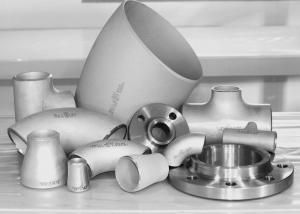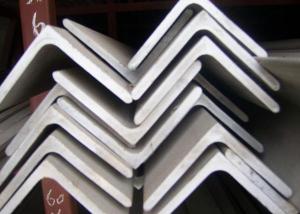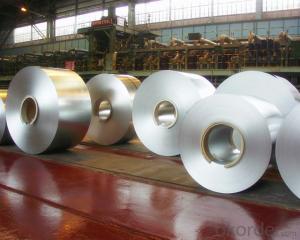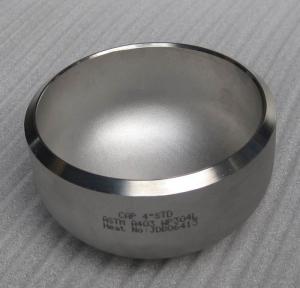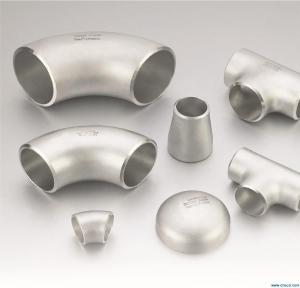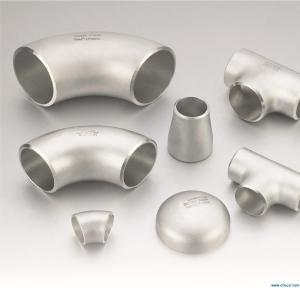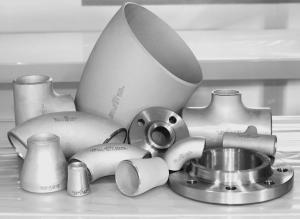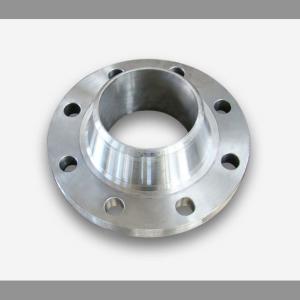Stainless Steel Fittings With Best Quality
- Loading Port:
- China Main Port
- Payment Terms:
- TT or LC
- Min Order Qty:
- 1 Piece m.t.
- Supply Capability:
- 1000 Pieces Per Day m.t./month
OKorder Service Pledge
OKorder Financial Service
You Might Also Like
Stainless Steel Fittings With Best Quality
Specifications Features Of Stainless Steel Fittings With Best Quality
1) Carbon steel fitting and stainless steel fitting
2) Standard: ASME, ANSI, API, JIS
3) Construction industry.
Chemical industry
Water tube
Pulp&Paper making industry
Heat exchanger tube,boiler tube,condenser tube,etc.
Type | BUTT WELDED FITTING |
Item | Elbows, seamless and welded, LR & SR ,Bend -Equal and reducing Tees, seamless and welded - Concentric and eccentric Reducers,seamless and welded -Caps |
Nickel Alloys Material | Grade: A403,WP304, WP304L, Wp316, WP316L, A234WPB |
Alloy Steel Material | ASTM A403 WP304 / WP304L / WP316 / WP316L / 316 Ti / 321 / 310 / 347 / 904L |
Dimension | Seamless: from 1/2' up to 24' |
Thickness | From Sch5 up to Sch160/STD/XS/XXS |
Size | 1/2" - 72" |
Grade | TP304,TP304L,TP321,TP316L,TP310S etc. |
Connection | welding |
Techniques | forged |
Surface finishing | 180/240/320/400 grit |
Outer packing Of Stainless Steel Fittings With Best Quality
Seaworthy plywood case
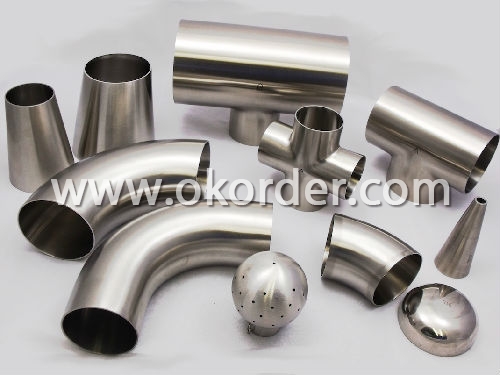

- Q:How do you calculate the weight of stainless steel flats?
- To calculate the weight of stainless steel flats, you need to follow a simple formula. The weight of any flat object, including stainless steel flats, can be determined by multiplying the area of the flat by its thickness and the density of the stainless steel material. First, measure the length and width of the stainless steel flat in inches or any other unit of measurement. Multiply these dimensions to calculate the area of the flat. Next, measure the thickness of the stainless steel flat in inches or any other unit of measurement. This is usually denoted as the "gauge" of the steel. Now, determine the density of the stainless steel material. The density of stainless steel typically ranges from 7.75 to 8.05 grams per cubic centimeter (g/cm³). To convert the density to the appropriate unit for weight calculation, divide it by 1000 to get the density in grams per cubic millimeter (g/mm³). Finally, multiply the area of the flat by its thickness and the density of the stainless steel material to get the weight of the stainless steel flat. The resulting weight will be in grams. If you want the weight in a different unit, you can convert it accordingly. Keep in mind that this formula provides an approximate weight calculation and may not be 100% accurate due to variations in the density of the stainless steel material. Additionally, this formula does not account for any holes or cutouts in the flat, which would reduce the weight.
- Q:Are stainless steel flats suitable for food processing applications?
- Stainless steel flats are an excellent choice for food processing applications, as they possess a multitude of desirable qualities. Due to its exceptional corrosion resistance, high strength, and durability, stainless steel is widely utilized in the food industry. Its resistance to staining guarantees a clean and hygienic food processing environment. Moreover, stainless steel flats are effortlessly cleaned and maintained, making them perfect for applications that necessitate frequent washdowns and sanitization. Additionally, stainless steel is non-reactive and does not release any harmful chemicals into the food, thus ensuring the safety and quality of the processed products. In conclusion, when it comes to food processing, stainless steel flats are a dependable and preferred option.
- Q:Are stainless steel flats resistant to wear and tear?
- Yes, stainless steel flats are highly resistant to wear and tear. Stainless steel is known for its exceptional durability and strength, making it an ideal material for various applications that require resistance to wear and tear. The unique composition of stainless steel, including a significant amount of chromium, provides it with a high level of corrosion resistance, which in turn makes it highly resistant to wear and tear. Stainless steel flats can withstand heavy usage, impacts, abrasion, and harsh environments without losing their structural integrity or deteriorating in quality. This makes stainless steel flats a popular choice in industries such as construction, manufacturing, automotive, and marine, where durability and longevity are crucial.
- Q:How do stainless steel flats perform in terms of impact resistance?
- Stainless steel flats possess remarkable properties of impact resistance, making them well-known in various industries. Their exceptional ability to withstand significant force without deformation or fracturing can be attributed to their unique composition, which includes a high percentage of chromium and nickel. This composition grants stainless steel flats high resistance to impact, making them an optimal selection for applications where impact resistance is of utmost importance, such as in the construction, automotive, and aerospace sectors. Moreover, stainless steel flats exhibit exceptional toughness and ductility, enabling them to absorb energy from impacts and safeguard the material against damage. In summary, stainless steel flats are highly dependable and long-lasting in terms of withstanding impact, rendering them a preferred option across diverse industries.
- Q:Are stainless steel flats suitable for medical applications?
- Yes, stainless steel flats are suitable for medical applications. Stainless steel is a highly durable and versatile material that offers numerous benefits for medical equipment and devices. It is resistant to corrosion, which is crucial in medical settings where sterilization and cleanliness are of utmost importance. Stainless steel flats can withstand repeated exposure to harsh chemicals, high temperatures, and moisture, making them ideal for surgical instruments, implants, and medical tools. Additionally, stainless steel is biocompatible, meaning it is safe to be used within the human body without causing any adverse reactions. It is also easy to clean and maintain, which ensures a high level of hygiene and reduces the risk of infections. Overall, stainless steel flats are a reliable and trusted material for medical applications due to their durability, corrosion resistance, biocompatibility, and ease of maintenance.
- Q:How do stainless steel flats resist magnetization?
- The resistance of stainless steel flats to magnetization is attributed to the unique properties of the material. Stainless steel, unlike other steel types, contains a significant amount of chromium, which forms a protective layer on the metal's surface. This layer, known as the passive film, acts as a barrier against external elements, including magnetic fields. To create the passive film, stainless steel undergoes a process called passivation, which entails the formation of a thin oxide layer on its surface. This layer exhibits exceptional resistance to corrosion and grants stainless steel its durability and resistance to magnetization. Moreover, stainless steel incorporates other alloying elements, such as nickel and molybdenum, which further enhance its resistance to magnetization. These elements serve to stabilize the steel's structure and prevent the alignment of magnetic domains, a prerequisite for magnetization to occur. The grain structure of stainless steel also contributes significantly to its resistance to magnetization. Typically, stainless steel flats are fabricated through cold rolling, a process that involves compressing the metal at room temperature. This procedure results in a fine-grained structure that impedes the movement of magnetic domains, rendering magnetization difficult. In conclusion, stainless steel flats resist magnetization due to the presence of a protective passive film, alloying elements, and a fine-grained structure. These factors synergistically prevent the alignment of magnetic domains, ensuring that stainless steel remains non-magnetic. Consequently, stainless steel serves as an ideal material for numerous applications where magnetism is undesirable.
- Q:Consult 304 stainless steel angles. What tools are used for cutting and drilling?
- The corrosion resistance of the chemical composition of stainless steel with increased carbon content decreased, therefore, the carbon content of most stainless steel are relatively low, the maximum of no more than 1.2%, some steel Wc (carbon) or even less than 0.03% (such as 00Cr12). The main alloying element in stainless steel is Cr (chromium), which is corrosion resistant only when the Cr content reaches a certain value. Therefore, stainless steel in general Cr (chromium) content of at least 10.5%. Stainless steel also contains Ni, Ti, Mn, N, Nb, Mo, Si, Cu and other elements, stainless steel is not prone to corrosion, pitting corrosion or corrosion or wear. Stainless steel is one of the highest strength materials used in construction. Because stainless steel has good corrosion resistance, it enables structural components to permanently maintain the integrity of Engineering design. Chromium containing stainless steel is also a combination of mechanical strength and high extensibility, easy to process and meet the needs of architects and structural designers
- Q:What are the common thickness tolerances for stainless steel flats?
- The thickness tolerances for stainless steel flats can vary depending on the grade and application requirements. However, there are accepted standards in the industry that provide guidance on acceptable thickness variations. Typically, stainless steel flats have tolerances ranging from +/- 0.001 to 0.005 inches (0.025 to 0.127 mm). These tolerances allow for normal manufacturing variations while ensuring that the flats meet the desired specifications. It is important to consider that certain industries or applications may have stricter tolerances based on their specific needs. For instance, industries requiring precise machining or strict dimensional requirements may have tighter tolerances ranging from +/- 0.0005 to 0.002 inches (0.0127 to 0.0508 mm). Ultimately, the appropriate thickness tolerances for stainless steel flats should be determined based on the intended use and application requirements. Consulting industry standards, engineering specifications, or working closely with a manufacturer or supplier can help ensure that the correct tolerances are met.
- Q:Are stainless steel flats resistant to acetic acid?
- Stainless steel flats are typically resistant to acetic acid. Stainless steel is renowned for its ability to resist corrosion and tolerate exposure to various acids, including acetic acid. This resistance stems from the presence of a protective oxide layer on the surface of stainless steel, which acts as a barrier against corrosive substances. Nevertheless, it is crucial to acknowledge that the degree of resistance may vary depending on the particular grade and composition of the stainless steel. Certain grades of stainless steel might exhibit greater resistance to acetic acid compared to others, hence it is always advisable to verify the compatibility of the specific stainless steel grade with acetic acid prior to usage.
- Q:Are stainless steel flats suitable for automotive industry?
- Yes, stainless steel flats are suitable for the automotive industry. Stainless steel is a versatile and durable material that offers a range of benefits for automotive applications. Firstly, stainless steel has excellent corrosion resistance, which is crucial in the automotive industry where vehicles are constantly exposed to various environmental conditions and chemicals. This resistance to corrosion ensures that stainless steel flats maintain their structural integrity and appearance over time, increasing the lifespan of automotive components. Additionally, stainless steel flats have high strength and can withstand heavy loads and stresses. This makes them ideal for use in automotive frames, chassis, and other structural components that require strength and durability. Stainless steel is also highly heat-resistant, making it suitable for automotive applications that involve high temperatures, such as exhaust systems and engine components. It can withstand extreme heat without losing its shape or mechanical properties, ensuring reliable performance. Moreover, stainless steel is known for its aesthetic appeal, which is important in the automotive industry where visual appeal plays a significant role. The smooth, polished finish of stainless steel flats can enhance the overall appearance of automotive components, adding a touch of elegance to the vehicle. Furthermore, stainless steel is easy to clean and maintain, which is beneficial in the automotive industry where cleanliness and hygiene are essential. It resists dirt, oils, and other contaminants, making it easier to keep automotive components clean and in optimal condition. Overall, stainless steel flats offer a combination of corrosion resistance, strength, heat resistance, aesthetics, and ease of maintenance, making them well-suited for various applications in the automotive industry.
1. Manufacturer Overview |
|
|---|---|
| Location | Anhui,China |
| Year Established | 2003 |
| Annual Output Value | Above US$16 Million |
| Main Markets | South Korea;Japan; Europe;ASEAN;India |
| Company Certifications | ISO 9001:2000; |
2. Manufacturer Certificates |
|
|---|---|
| a) Certification Name | |
| Range | |
| Reference | |
| Validity Period | |
3. Manufacturer Capability |
|
|---|---|
| a)Trade Capacity | |
| Nearest Port | Shanghai |
| Export Percentage | 70% |
| No.of Employees in Trade Department | 160 People |
| Language Spoken: | English;Chinese;Japanese;Korea |
| b)Factory Information | |
| Factory Size: | Above 300,000 square meters |
| No. of Production Lines | Above 10 |
| Contract Manufacturing | OEM Service Offered;Design Service Offered |
| Product Price Range | Average |
Send your message to us
Stainless Steel Fittings With Best Quality
- Loading Port:
- China Main Port
- Payment Terms:
- TT or LC
- Min Order Qty:
- 1 Piece m.t.
- Supply Capability:
- 1000 Pieces Per Day m.t./month
OKorder Service Pledge
OKorder Financial Service
Similar products
New products
Hot products
Related keywords
